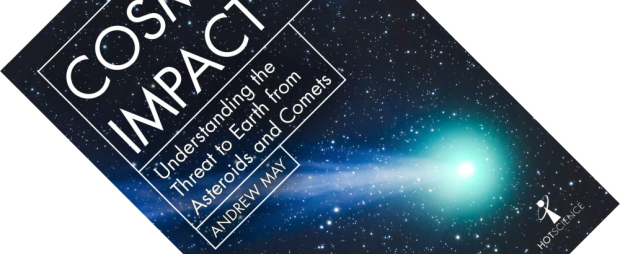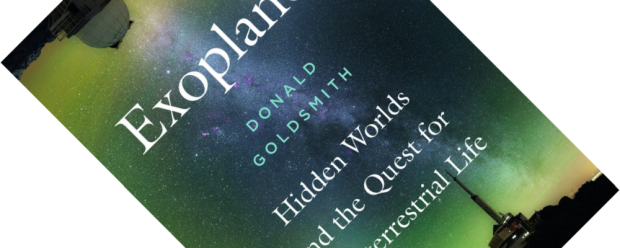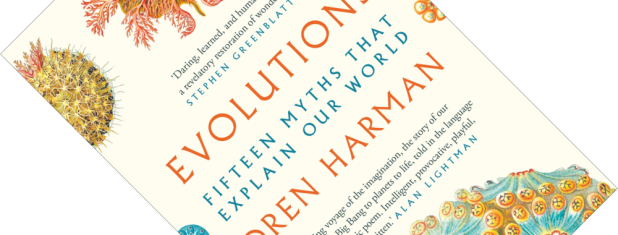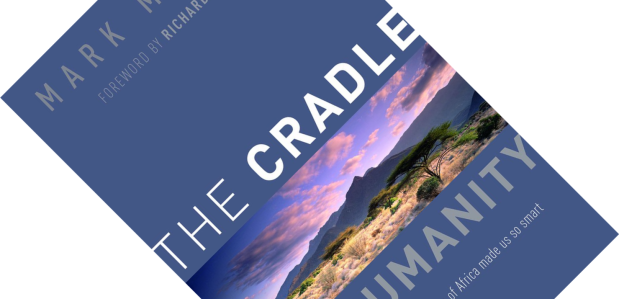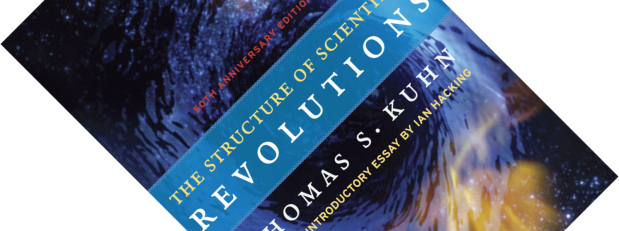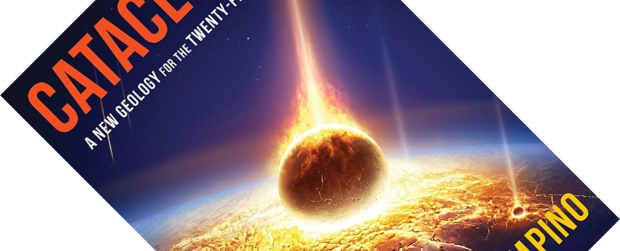The idea of an asteroid or comet impacting with planet Earth and causing a catastrophe for mankind has long been given a cold shoulder in scientific circles. But with the notion that the dinosaurs met their fate at the hand of a rather large space rock it does not seem so outlandish anymore. NASA has started monitoring near-earth objects, but is there really something we could do if one was heading our way? Astrophysicist and science writer Andrew May provides a delightful little primer on these questions with Cosmic Impact, injecting this oft-hyped topic with a healthy dose of realism.
astronomy
Book review – Exoplanets: Hidden Worlds and the Quest for Extraterrestrial Life
Humans have been gazing at the stars since times immemorial. Once we understood what stars were, and that our planet together with others circled one such star, it was only a small step to think that there must be other planets outside of our Solar System. But only in the last 25 years have we been able to start finding these so-called exoplanets. Astronomer Donald Goldsmith here promises, and delivers, an introduction that even an astronomy novice such as myself could understand and thoroughly enjoy.
Book review – The Vinyl Frontier: The Story of the Voyager Golden Record
What an appropriately punny title. Indeed, the Voyager Golden Records have boldly gone where no records have gone before. A record with images, spoken greetings, everyday sounds, and classical, contemporary and world music intended as an interstellar hello. Writer, record collector, and self-professed astronomy geek Jonathan Scott here tells the story of one of the most unusual human artefacts to have ever been sent into deep space.
Book review – Evolutions: Fifteen Myths That Explain Our World
Communicating the complexities and abstractions of scientific findings is not easy. Anyone who has ever slogged through yet another dense paper or muddled presentation will acknowledge this. Our universe, it seems, cares not for the human quest of understanding it. One of the things, then, that makes popular science books such a treat is that they infuse scientific findings and speculation with a certain lyricism and good storytelling. This is why we flock to authors such as Nick Lane, Richard Dawkins, Richard Fortey, and many others besides. This is why Richard Feynman and Carl Sagan remain household names decades after their death. The latter’s Pale Blue Dot segment still gives me goosebumps. With Evolutions: Fifteen Myths That Explain Our World, science historian Oren Harman boldly turns the concept on its head: rather than bringing poetic flair to a pop-science book, he brings scientific flair to an epic poem.
Book review – The Cradle of Humanity: How the Changing Landscape of Africa Made Us So Smart
The story of human evolution is constantly being refined with new findings and there is a glut of accessible books that cover this topic from various angles. Yet, with The Cradle of Humanity, geography professor Mark Maslin manages to provide an interesting and novel take on the subject, showing the reader how a happy combination of larger factors conspired to influence and steer our evolutionary trajectory. It could have ended up so differently…
Book review – The Structure of Scientific Revolutions (50th Anniversary Edition)
This review is part of a double bill. Cold Spring Harbor Laboratory Press recently published How Scientific Progress Occurs: Incrementalism and the Life Sciences. In it, Elof Axel Carlson explores the relevance to biology of the ideas Kuhn formulated in his book The Structure of Scientific Revolutions. This is one of those classics already on my to-do list, so I have read both books back-to-back and will review them one after the other. Anyway, who is this Kuhn and why should you care? Virtually everyone will have heard the buzzwords “paradigm” and “paradigm shift” – and for that, you can thank Kuhn.
Book review – Life on Mars: What to Know Before We Go
Our planetary neighbour Mars has long fascinated us, and the idea of there being Martian life holds a strong grip on our collective imagination. NASA and others are becoming serious about sending people to Mars. Before we do so, astronomy professor David Weintraub would like to give you this readable history of our fascination with the Red Planet and the research that tries to answer the question: is there life on Mars? (Admit it, you were crooning that David Bowie song there).
Book review – The Oceans: A Deep History
So, stop me if you’ve heard this one before, but it is often said that we know more about the moon than we do about our own oceans. However, palaeo-oceanographer and climate scientist Eelco J. Rohling points out we know more than you might think. His new book, The Oceans: A Deep History, takes the reader through a 4.4-billion-year history of Earth’s oceans. Much more than just a book about water, this is foremost a book about the intimate link between our planet’s climate and its oceans, as they are far more intertwined than you might give them credit for.
Book review – Planet of Microbes: The Perils and Potential of Earth’s Essential Life Forms
What unites deep subterranean caves, hydrothermal vents in the deep sea, our guts, cloud formation, geochemical processes, and astrobiology (the search for life beyond our planet) to name but a few things? Microbes. The tiny, single-celled organisms that we cannot see with the naked eye are everywhere. With Planet of Microbes, Ted Anton makes the point that this world is really theirs, and takes the reader on a tour of the rapid increase in our understanding of their importance, focusing on three major subjects.
Book review – Cataclysms: A New Geology for the Twenty-First Century
Was the asteroid impact that caused the extinction of the dinosaurs a one-off? Or are other mass extinctions in earth’s deep history perhaps also linked to impacts of extraterrestrial bodies? Many scientists are reluctant to accept this idea. In Cataclysms, Rampino argues that it is high time to cast off the spirit of Lyell that continues to haunt geological thinking and embrace a new era of catastrophism.

